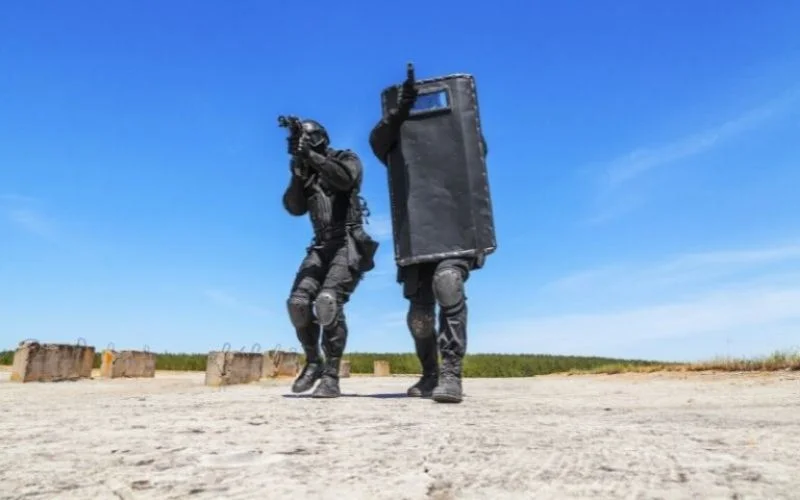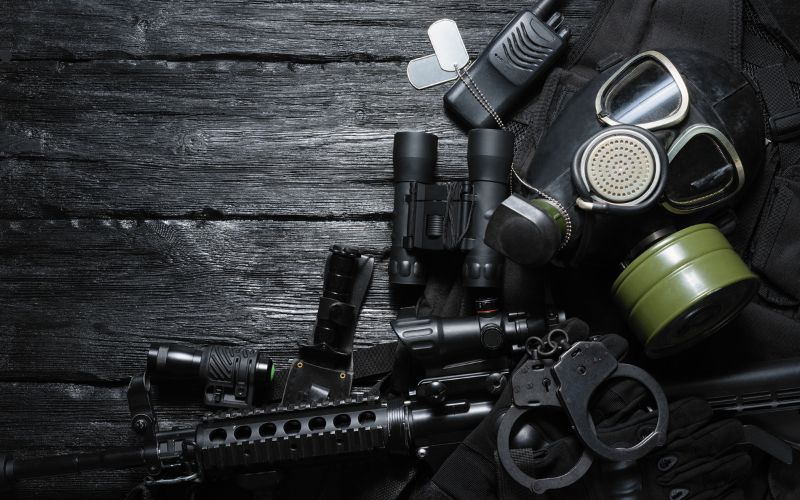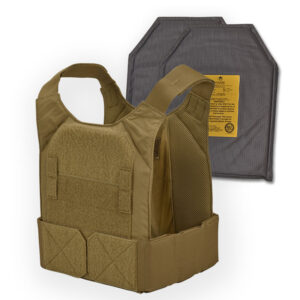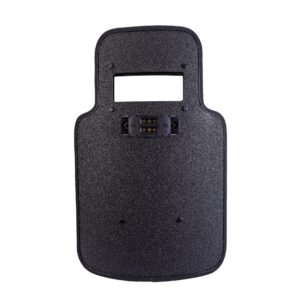Ballistic Shield Training For Civilians

A ballistic shield is a handheld protective device designed to deflect or stop bullets, shrapnel, and other projectiles. Constructed from advanced materials like Kevlar, polyethylene, or ceramic composites, these shields provide different levels of protection based on their size, design, and materials used. Ballistic shields are primarily used and considered essential gear for law enforcement, military personnel, and security teams. Still, there is growing interest among civilians in owning and using these shields, especially in areas prone to violence or high-risk situations.
While owning a ballistic shield can offer peace of mind, using it effectively requires proper training. Ballistic shield training courses teach participants how to maneuver, defend, and coordinate in crises.
Ballistic Shield Training Course: An Overview
Ballistic shield training teaches participants the knowledge and skills to use a shield in high-risk situations. The course typically covers basic shield handling, defensive techniques, active shooter response, and combining firearms with shield use.
Here’s a detailed look at the key aspects of ballistic shield training:
Course Duration And Structure
The duration of ballistic shield training can range from 1 to 3 days, depending on the provider and the level of training. Some courses span approximately 24 hours, spread across multiple days. These sessions cover a range of techniques, from basic shield usage to advanced tactical operations. The course structure is progressive, starting with simple shield-handling skills and advancing to more complex maneuvers and real-life scenario simulations.
Essential Equipment For The Course

Participants in ballistic shield training are usually expected to bring their equipment, although some providers offer loaners. The essential gear for most courses includes:
- Ballistic Shield: This is the primary tool for the course. Participants either bring their own or rent one from the training provider. Choosing a shield with a durable viewport and appropriate protection level, such as NIJ Level IIIA, is crucial for effective defense. Lightweight and portable models enhance mobility and ease of use during training and real-world scenarios.
- Firearms: A pistol and a long gun (such as a rifle, rounds, or shotgun) are typically required.
- Ammunition: Most courses recommend bringing approximately 400 pistol rounds and 100 long-gun rounds.
- Protective Gear: Eye protection, ear protection, body armor, and a tactical vest are mandatory.
- Duty Belt: To carry equipment like tactical firearms and additional gear.
- Weather-Appropriate Clothing: Comfortable and suitable attire for outdoor or indoor environments.
- Hydration Gear: Staying hydrated is crucial during the physically demanding training sessions.
Additional accessories, such as pouches, bags, and helmets, enhance organization and preparedness, ultimately contributing to overall safety and security. Many participants sort their gear carefully to ensure quick access during emergencies. By providing participants with the right gear, instructors can create realistic and effective training environments that closely mimic real-world situations.
Why Civilians Should Consider Ballistic Shield Training?
Though ballistic shields were once exclusive to law enforcement and the military, they are becoming more accessible to civilians. However, owning a shield is only the first step; knowing how to use it properly is critical for personal safety. Here are several reasons why civilians should consider enrolling in ballistic shield training courses:
Enhanced Protection In High-Risk Situations
Simply owning a ballistic shield is not enough to provide adequate protection in dangerous scenarios like armed robberies or active shooter situations. Training ensures that individuals know how to react quickly and use the shield effectively at different threat levels. The training helps civilians prepare for high-stress scenarios where quick responses can mean the difference between life and death.
This training is especially vital for those living in areas where emergency preparedness is critical and police response times may be delayed.
Improved Decision-Making Under Stress
One key benefit of ballistic shield training is that it teaches civilians to make decisions under pressure. Participants learn to assess threats, prioritize their safety, and act quickly in critical situations. This heightened awareness and quick decision-making can be invaluable during emergencies, helping individuals remain calm and composed while effectively using the shield.
Maneuvering Techniques For Maximum Protection
Using a ballistic shield effectively requires proper positioning, balance, and movement. The shield must be positioned to protect vital areas while allowing the user to move quickly and strategically. Training courses teach participants how to maneuver with the shield, move through confined spaces, and maintain protection while staying mobile. This skill is particularly important when navigating complex environments, such as homes, offices, or public spaces, during a crisis.
Integrating The Shield With Firearms And Other Defensive Tools
Learning how to integrate the ballistic shield with a weapon is critical for civilians who carry firearms. Training programs cover drawing and firing techniques while maintaining the shield’s protective barrier. Combining the right firearms with the shield ensures maximum protection while allowing for offensive or defensive actions as needed.
Building Teamwork And Communication Skills
Many ballistic shield training programs emphasize teamwork and communication, which are essential in multiple-person scenarios. Whether working with family members, coworkers, or other civilians, learning to communicate effectively while using the shield can improve safety outcomes. Participants are trained to move as a unit, coordinate their actions, and provide mutual protection.+632
What To Expect In A Ballistic Shield Training Course
Ballistic shield training courses vary depending on the provider, but most programs follow a structured curriculum that covers the following essential skills:
Basic Shield Handling
This phase of training focuses on the fundamentals of shield use. Participants learn to hold the shield correctly, balance its weight, and maintain stability. Proper shield handling is crucial for establishing a solid foundation before progressing to more advanced equipment and techniques. Instructors ensure that participants are comfortable using the shield in various positions and can carry it for extended periods without fatigue.
Defensive Techniques And Maneuvering
Once participants have mastered basic shield handling, the course proceeds to defensive maneuvers. This section focuses on blocking attacks, moving in tight spaces, and protecting others while maintaining cover. These techniques are especially useful when participants must shield themselves or others from gunfire or debris. The training emphasizes the importance of positioning and movement to optimize the shield’s effectiveness.
Active Shooter Scenarios
A significant portion of many ballistic shield training courses involves preparing for active shooter scenarios. Instructors use realistic drills and simulations to teach participants how to react during an active shooter incident. This training includes assessing the situation, staying calm under pressure, and using the shield to move strategically toward safety. These scenarios provide valuable experience in dealing with high-stress, life-threatening conditions.
Firearms Integration
For participants who carry firearms, learning to combine the use of a ballistic shield with firearms is a critical component of training. This section covers drawing a weapon while keeping the shield in place, firing from behind the shield, and maintaining accuracy and control. Instructors guide participants on how to balance offensive and defensive actions, ensuring they can effectively use the shield and firearms. The MTS Level III Shield enhances tactical visibility, allowing operators to deploy firearms from both right and left sides more effectively.
Teamwork And Communication
Coordination is crucial in situations involving multiple people. Ballistic shield training teaches participants to communicate and work together in high-pressure situations, whether coordinating movements with family members, coworkers, or security teams. Effective communication is essential for ensuring everyone’s safety.
Who Should Consider Ballistic Shield Training?
While ballistic shield training is highly specialized, it can benefit various civilian groups. Here are some examples of who might consider enrolling in a training course:
Security Professionals
Private security personnel working in high-risk environments can greatly benefit from training with ballistic shields. It enhances their ability to protect themselves and their clients in dangerous situations, such as armed confrontations or threats of violence.
Teachers And School Administrators
In light of increasing concerns over school shootings, some educators and administrators in high-risk areas are seeking ballistic shield training. This training can give them the survival skills to protect students during emergencies.
High-Profile Individuals
Celebrities, politicians, or anyone at risk of targeted attacks can use ballistic shield training to improve their security. Protecting oneself and others in high-risk environments is crucial for those who face persistent threats.
Families In High-Crime Areas
Civilians living in high-crime neighborhoods or regions affected by violence may consider ballistic shield training to better prepare for emergencies. This training can offer peace of mind and practical skills for handling potentially dangerous situations.
Conclusion
Ballistic shield training provides valuable skills for anyone looking to enhance their safety in high-risk situations. Whether you’re a civilian, security professional, or educator, learning to use a ballistic shield effectively can significantly improve your ability to protect yourself and others. By understanding basic shield handling and defensive techniques and integrating firearms with shield use, participants can be better prepared to face potential threats with confidence and control.
Frequently Asked Questions
Do I Need Any Prior Experience Before Enrolling In Ballistic Shield Training?
No prior experience is required. Courses are designed to accommodate civilians of all experience levels; however, familiarity with self-defense or firearms may be beneficial.
How Long Does Ballistic Shield Training Typically Take?
Training courses usually last one to three days, with longer options available for advanced tactics or certifications.
Are Ballistic Shields Legal For Civilian Use?
Yes, civilians can legally own ballistic shields in most regions. However, local laws vary, so it’s important to check.
What features should I consider when choosing a ballistic shield?
When selecting a ballistic shield, prioritize impact resistance, coverage, and durability to ensure optimal protection. Consider features like a clear viewport and the ability to carry handgun ammunition in attached bags or accessories. Sorting products by these qualities helps make the best choice for your emergency preparedness needs.
Are ballistic shields suitable for non-military use and civilian emergencies?
Yes, many ballistic shields are designed specifically for non-military users, providing effective protection during emergencies. Their lightweight design and customizable accessories make them practical for civilians focused on safety and preparedness.


